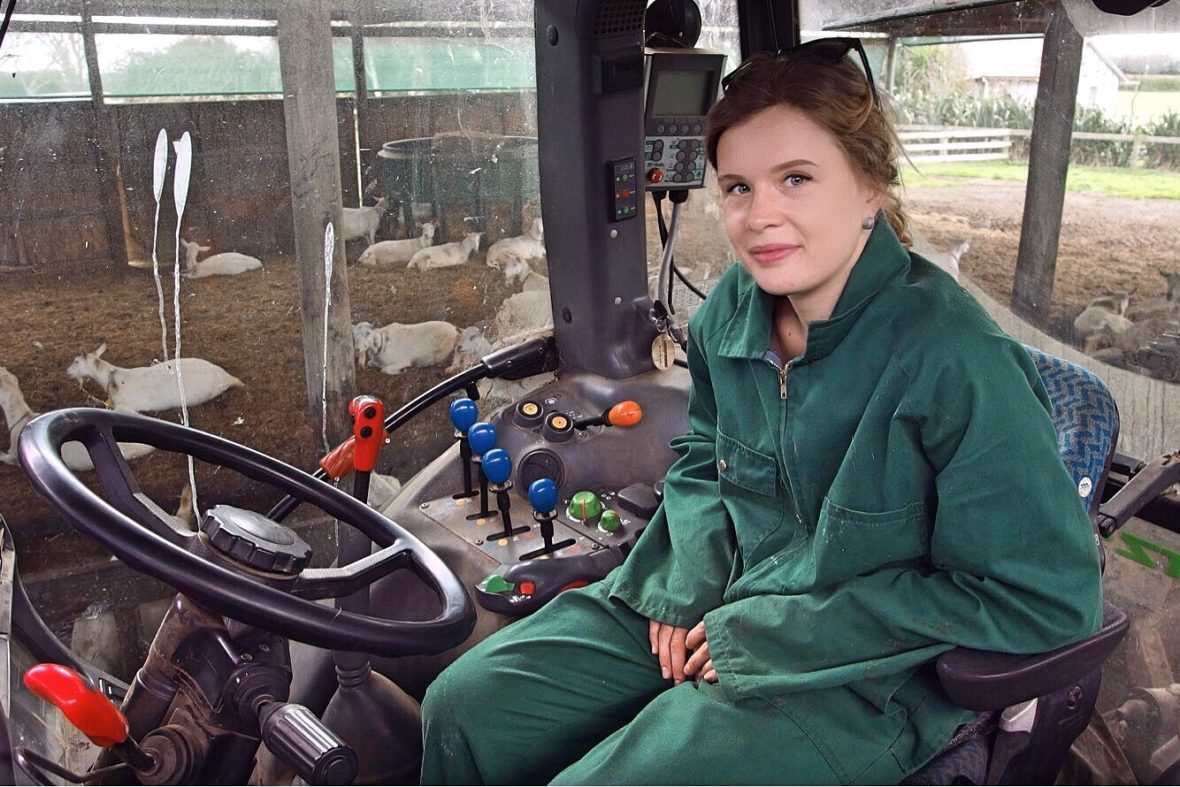When you come to New Zealand on Working Holiday Visa, you most likely end up working in agriculture, either on orchards, vineyards or farms. Most lazy assess, like me, don’t quite enjoy it and just survive it to earn some money. There are, of course, some exceptions – like my friend Honzik. He spent 3 years working on an organic dairy farm Bentham in Matamata and he loved every single animal he looked after. Bentham farm covers an area of 400ha certified organic land – 150ha is used for goats and the rest for cows. There are 700 adult goats + 300 kids (replacements) and 250 cows + 50 calves (replacements) + 100 calves (for grazing and sale). Honzik, as a Herd Manager, was responsible for the goat section. 1000 goats – that is a lot of mouths to feed. Adult goat eats 7 kg of grass daily and gives you 5 litres of milk in return. All the milk is harvested every second day and taken to the milk factory where the final product ‘milk powder’ or ‘baby formula’ is being made. Bentham farm produces 6000 litres of goat milk every second day. Together with other 68 dairy goat farms from New Zealand covers the demand of Asian market.
Like anywhere else, farming in New Zealand depends on weather conditions. North Island has got a very favourable climate that varies throughout the year.
Winter usually brings heavy rainfalls and the temperature sometimes drops below zero. It gets very hard to harvest some fresh grass. Winter is the most important and busiest part of the year. Goats are giving births and the milking season starts. Once the goat gives birth, baby goat is separated and its mum joins the milking herd. For the first three days, the mum produces colostrum (known as the first milk) – that usually gets back to baby goats to provide them with important nutrition. Babies are kept together and nursed up to 5 days 5 times daily until they become independent.
In the spring, the sun gets stronger and warms up the surface; heavy rainfalls transform into small showers during the day. New grass is growing and it is full of sugars and protein necessary for milk production. On Bentham farm, they keep the goats indoor in big barns with outside areas. Goats don’t cope well with rain because their skin is not waterproof. For the milk production, it is crucial to provide them with non-stress environment. All the fresh grass is being brought to the goats. It is approximately 10 tons of grass every day harvested with a tractor and a harvester. Goats in milking sheds are fed with a mix of maize and brewing grains. Spring is a great time for making grass silage (fermented grass conserved in plastic bales) which allows to preserve feeding for upcoming dry season.
New Zealand sun gets very strong in summer. There is no rain and all the vegetation turns yellow quickly. The grass stops to grow and the goats have to be fed with the preserved silage. The grass gets stalky at the end of summer and that is the right time to make a hay. The goats are fed with the hay in winter when they are dried off. It keeps them warm and fills up their stomachs with fibre. The goats are mated when the days are getting shorter – usually the first day after the solstice.
Autumnal occasional rains cool down the air and enable the grass to pop up again. Goats are fed with grass until winter arrives. The milking season finishes and goats are on a strict diet. Goats, which are pregnant for 5 months and 5 days, should be kept on this diet for the last 6 weeks of their pregnancy.
Dairy farming in New Zealand is a $11 billion industry, however, this job isn’t for everyone. You need to be tough, physically strong and resilient to changeable weather. As a reward for your hard work you get some NZ dollars but first of all – the endless and unconditional animal love.






































